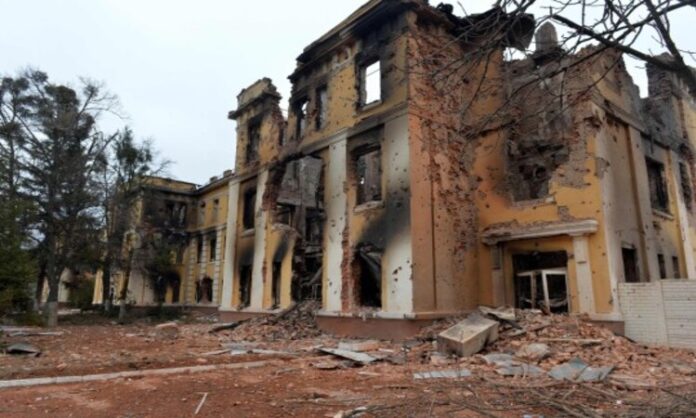
Russian soldiers have been accused of employing vacuum bombs, which are generally forbidden and hazardous weapons that “obliterate” their targets.
Amnesty International accused Russia of attacking a preschool in northern Ukraine with vacuum bombs, or thermobaric weapons, as people took cover inside.
After meeting with members of the US Congress on Monday, Ukraine’s ambassador to the US, Oksana Markarova, informed reporters that Russia had deployed a thermobaric weapon. After a meeting with MPs, Markarova remarked, “They used the vacuum bomb today.” “The destruction that Russia is attempting to wreak on Ukraine is massive.”
Jen Psaki, the White House press secretary, said she had read stories but couldn’t confirm if Russia had deployed such weapons. If confirmed, Psaki warned, “that might potentially constitute a war crime.”
According to a Human Rights Watch investigation, the thermobaric weapon, also known as a fuel-air explosive, employs a fuel container and two separate explosive charges.
Human Rights Watch is a New York-based multinational nongovernmental organisation dedicated to human rights concerns.
When the weapon is shot or dropped, the first explosive charge disperses the fuel in a cloud that absorbs oxygen before flowing “around things and into buildings.” The second charge detonates as the gasoline cloud expands. The blast wave created by the explosion is particularly devastating in confined places, such as houses and foxholes.
International humanitarian law, according to Amnesty International, forbids the use of weapons that are inherently indiscriminate, such as cluster bombs and thermobaric weapons.
Human Rights Watch described Russia’s probable deployment of chemical weapons in Chechnya, a Russian region, as “a hazardous escalation” with “significant humanitarian repercussions” in 2000.
The Russian military allegedly deployed FAE bombs on the Dagestani settlement of Tando, Russia, in August 1999. According to The New York Times, identical thermobaric bombs were employed by the US in tunnels controlled by the Islamic State organisation in Afghanistan in 2017.
According to a CIA assessment, the weapons are “prone to indiscriminate use” and “obliterate” those nearest to the blast. According to a CIA research, the vacuum bomb’s pressure wave kills its victims by “rupturing lungs,” and if the device doesn’t detonate, the victims will breath the burning fuel.
Because the most prevalent FAE fuels, ethylene oxide and propylene oxide, are highly poisonous, undetonated FAE should be equally fatal to individuals trapped in the cloud as most chemical agents, according to the research.
Furthermore, when numerous thermobaric weapons are detonated at the same time, they reinforce one another, resulting in a greater, more lethal blast, according to Human Rights Watch.
According to the study, people who are near to the blast might suffer injuries such as “blown eardrums and crushed inner ear organs, severe concussions, ruptured lungs and internal organs, and potentially blindness.”

















